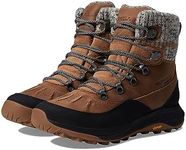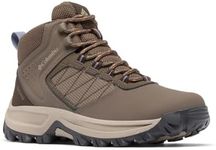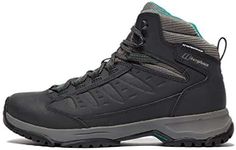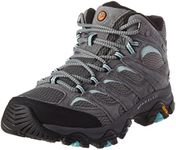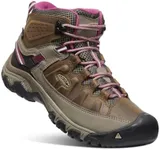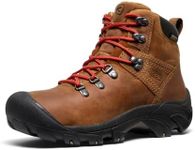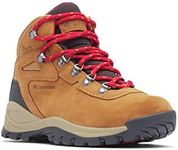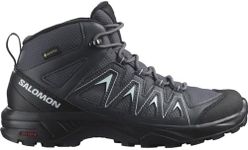Buying Guide for the Best Hiking Boots For Women
Choosing the right hiking boots is crucial for comfort, safety, and performance on the trails. The right pair will depend on the type of hiking you plan to do, the terrain, and your personal preferences. It's important to consider factors such as fit, support, and durability to ensure that your hiking experience is enjoyable and free from discomfort or injury.FitFit is the most important factor when choosing hiking boots. A good fit ensures comfort and prevents blisters and other foot issues. Hiking boots should fit snugly everywhere, tight nowhere, and offer room to wiggle your toes. When trying on boots, wear the socks you plan to hike in and walk around to test for comfort. Consider the length, width, and arch support. If you plan on hiking long distances or carrying a heavy pack, you might want a slightly larger size to accommodate foot swelling.
SupportSupport in hiking boots refers to how well the boots stabilize your feet and ankles. This is particularly important on uneven terrain or when carrying a heavy backpack. Boots with higher ankle support are ideal for rough trails and backpacking, while low-cut boots or shoes may suffice for lighter, easier hikes. Consider your hiking style and the terrain you will encounter to determine the level of support you need.
MaterialThe material of hiking boots affects their weight, breathability, and water resistance. Leather boots are durable and offer good water resistance but can be heavier. Synthetic materials like nylon and polyester are lighter and more breathable but may not be as durable. If you hike in wet conditions, consider boots with waterproof membranes. Choose materials based on the climate and conditions you expect to encounter on your hikes.
TractionTraction is provided by the sole of the hiking boot and is crucial for maintaining grip on various surfaces. Look for boots with deep, multi-directional lugs for better grip on rocky or muddy trails. If you plan to hike on icy or snowy paths, consider boots that are compatible with crampons. The type of terrain you will be hiking on should guide your choice in traction.
WeightThe weight of hiking boots can affect your energy levels and speed on the trail. Lighter boots are generally more comfortable for long distances and less strenuous hikes, while heavier boots offer more support and protection for rugged terrain. Consider the type of hiking you will be doing and your personal preference for boot weight when making your choice.
WaterproofingWaterproofing is important if you plan to hike in wet conditions or cross streams. Waterproof boots keep your feet dry and comfortable, but they can also be less breathable, which might lead to sweaty feet in warm weather. If you often hike in dry conditions, you might prioritize breathability over waterproofing. Consider the typical weather and trail conditions you will encounter to decide on the level of waterproofing you need.


